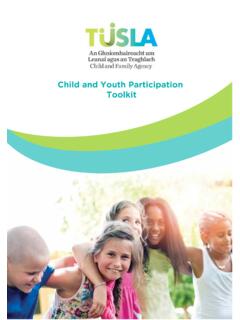Transcription of living with or beyond cancer A ‘how to guide’
1 HEARTLUNGDIAGNOSTICSSTROKECANCERC ancerNHSNHS ImprovementInnovation to implementation:Stratified pathways of care for peopleliving with or beyond cancerA how to guide ForewordConsensus statementIntroductionGetting startedService improvement tools and techniquesPrinciple 1: Stratified pathwaysPrinciple 2: Needs assessment and care planningPrinciple 3: Personal care records/treatment summariesPrinciple 4: Accessing the servicePrinciple 5: Information and education Principle 6: Remote monitoringPrinciple 7: Care co-ordinationPrinciple 8: Self-managementCommissioning and fundingReferences and acknowledgements Innovation to implementation: Stratifed pathwaysof care for people living with or beyond cancerA how to guide 234717192741495361757981891 ContentsContentsOver the past few years NHS improvement, as apartner in the National cancer SurvivorshipInitiative, has led the testing and prototyping ofrisk stratified pathways of care for those livingwith and beyond cancer to improve the qualityand effectiveness of services for am delighted to support this document that provides local teams with a very practical how to guide , based on the experience of the test sites, who with support from NHS Improvement, havedeveloped and implemented the new model of care within their services.
2 Within the model of care, the implementation of stratified pathways tailored to individual needsoffers huge benefits to patients and the service. It will improve the quality of life for peoplefollowing treatment for cancer through addressing their needs, and help them to return to livingtheir lives as positively, healthily and quickly as possible. We are delighted that this work has now been recognised by professional associations and keycharities. There is great enthusiasm to change the way we manage follow-up, and this publicationshould provide the flexibility to guide you to implement this stratified model of care for those livingwith and beyond Frew, Director, NHS ImprovementForeword2 ForewordThe National cancer Survivorship Initiative (NCSI) through NHS Improvement has supported: The implementation of Breast, Colorectal and Prostate stratified pathways in sites across the NHS The implementation of stratified pathways following treatment benefits patients, carers and the have their needs met in a timely manner, are better informed about their disease, treatmentand any longer term effects.
3 With the focus on health and wellbeing, patients are supported to takeback control of their lives as soon as they are in unnecessary outpatient appointments for those who no longer require face to faceappointment s releases capacity for those with complex needs and helps improve access for believe that a supported self management pathway with remote surveillance and withguaranteed re access should now be offered as one standard practice in these tumour groupsfollowing treatment for statementNHSNHS ImprovementNational cancer Survivorship Initiative (NCSI):Consensus statementNHS improvement has been working as part of the National cancer Survivorship Initiative (NCSI) toimprove the quality and effectiveness of care and support to those living with and beyond NCSI was set up as a recommendation arising from The cancer Reform Strategy (2007) , withmore recent reference to the work in the Improving Outcomes: a Strategy for cancer (2011).
4 TheNCSI Vision was produced in 2010 and was recently updated to take work forward until Improvement has led the testing and development of a stratified model of care and support thataccounts for holistic patient needs in addition to the needs of the disease or treatment received. Thetumour pathways developed are for breast, colorectal, prostate and lung cancer . The lung cancertumour pathway was pilot tested in two sites and was not taken forward to prototyping. The NHSI mprovement team supporting this programme of work includes an improvement director, twonational improvement leads and five national clinical generic pathway below identifies the key pathway components that need to be considered incommissioning and delivering care and support to cancer LEDPRIMARY CARE LEDCONTINENCE/STOMAPSYCHOLOGICALCLINICAL SUPPORTSERVICESEDUCATION &INFORMATIONPHYSICALACTIVITYREVIEWCARE PLANPHYSIOTHERAPY/OCCUPATIONAL THERAPYDIET & NUTRITIONSEXUAL ISSUESLYMPHOEDEMASELF MANAGEMENT PROGRAMMESINFORMATION/EDUCATION DAYSINFORMATION PRESCRIPTIONSDIAGNOSISCLINICAlREVIEWNEED SASSESSMENTWRITTENCARE PLANCLINICALSUPPORTSERVICESEDUCATION &INFORMATIONOTHERSUPPORTSERVICESNEEDSASS ESSMENTTREATMENTSUMMARYOTHERSUPPORTSERVI CESSUPPORTIVE AND PALLIATIVE CARETRANSITION TO END OF LIFE CAREPROFESSIONAL LED FOLLOW UPSUPPORTED SELF MANAGEMENTMDTTIMELY RE-ACCESSREMOTE MONITORINGCONSULTANT LEDNURSE SPECIALIST LEDTRUST LED
5 EXERCISE PROGRAMMESREABLEMENT/SOCIAL CAREFINANCE AND BENEFITSVOCATIONAL REHABILITATIONCOMPLEMENTARY THERAPIESVOLUNTARY SECTOR/SUPPORT GROUPSTREATMENT(CURATIVE/PALLIATIVE)Firs t line and/orsubsequentMDTRECURRENCE/SYMPTOMS/A BNORMAL TESTSTREATMENTDECISIONLOCAL AUTHORITY, COMMUNITY ORPRIVATELY LED EXERCISE SCHEMES+IntroductionAn interactive version of this pathway is available on the NHS Improvement contains examples andcontent in the form of documents, video or audio clips. During the testing of stratified pathways, NHS Improvement has supported, coached and facilitatedpathway development and implementation in 14 test communities in England. The communities arebased around cancer clinical teams where much of the learning has been obtained. Macmillan CancerSupport and other tumour specific charities including Beating Bowel cancer , Prostate cancer UK andBreast cancer Care, have supported the sites in developing and implementing the new ways 2008 NHS Improvement has done a lot of work to better understand the needs of cancer patients and to improve their experience and outcomes of care.
6 Their views of how the service can be improved have been at the heart of this improvement programme. The learning and evaluation of this programme NHS Improvement has produced several publications2,3,4,5,6outlining its work. This includes baseline evaluations7,8to understand the type of services patients need and the ability of the service to meet their needs. Using this guideThe guide is intended as a flexible resource for you to refer to as you implement a package of care for those living with and beyond cancer . Documents, publications other items can be accessed via the links at the bottom of each page or on the USB stick accompanying hard copies of this can work together to assess the currentposition then select the order to implement the principles based on the needs of your community andthe resources available. This is explained in greater detail in the section Getting started on page 7.
7 Although the sections on the principles are presented separately we recommend that you consider thewhole programme timetable to ensure that all the elements are in place. Experience from testing hasfound that some components take much longer to deliver than others. 51 Stratified pathway diagrams, Generic, breast, prostate, colorectal 2 Rapid review of current service provision following cancer treatment. NHS Improvement (Sept 2010)3 living with and beyond cancer : the improvement story so far (July 2010)4 Effective follow up: testing risk stratified pathways of care (May 2011)5 Sharing the learning through posters: The work of NCSI test sites ( March 2012)6 Stratified pathways of care: from concept to innovation. (May 2012)7 National cancer Survivorship Initiative and Ipsos MORI Social Research Institute. Evaluation of Adult After - Care cancer Service Wave 1 Report October 20118 National cancer Survivorship Initiative and Ipsos MORI Social Research Institute.
8 Evaluation of adult aftercare services. A qualitative analysis of care coordination (June 2012)IntroductionProject4_Layout 1 03/06/ 2013 16:35 Page 1 The following checklist will help you determine where you are with the introduction of stratifiedpathways and the components within the are stratified to the appropriatefollow up pathway based on clinical andindividual needs. Assessment and care planningdiscussions are held at diagnosis, end oftreatment and other key points in thepathway and all patients have a writtencare summaries are completed atthe end of treatment and a copyprovided to the patient and events and supportprogrammes are available to all patientswho need are aware of availability ofclinical support services and how to psychological support. Clinicians are aware of availability ofnon-clinical support services and how torefer physical activity schemes,benefits IT system enables the specialist toschedule and monitor surveillance tests.
9 Systems to re-access the service are clearto patients, staff and commissioners andresponse to patients is timely. ImplementationGuide referenceYes In progress NoGo to pageOnce you have completed the above self-assessment you should read the section Getting started on page 7 before you move onto implementing individual startedThis chapter provides information on how to get started with implementation and project managementarrangements, together with advice on identifying your baseline position and on-going measures. Inaddition there is information on service improvement techniques that may be useful. Deciding the specialty focusThe Trust decision on which specialty is selected will depend on a variety of key factors including: senior medical and nurse specialist support and enthusiasm; executive and directorate management support; history of successful improvement work within the specialty; expected impact on quality of service for patients; and expected impact on efficiency and factors to consider are: IT support access to IT time and skills is critical to the establishment of the self-managed pathway.
10 Consider your Trust s IT strategy and where the development or introduction of a remote monitoring solution might fit into the annual programme; and project management support progress is likely to be rapid and more successful if there is dedicated project management we have divided the pathway into principles there are some elements that go hand in hand. Forinstance if you are planning to introduce a self-management pathway you need at a minimum toensure that: you have an IT system that can schedule and record surveillance tests and functions independently of outpatient visits; you have an agreed protocol for managing patients on a self- managed pathway; patients have had their needs managed and they are informed and knowledgeable about their disease and follow up plan; and a system exists for re-accessing the service if required.














